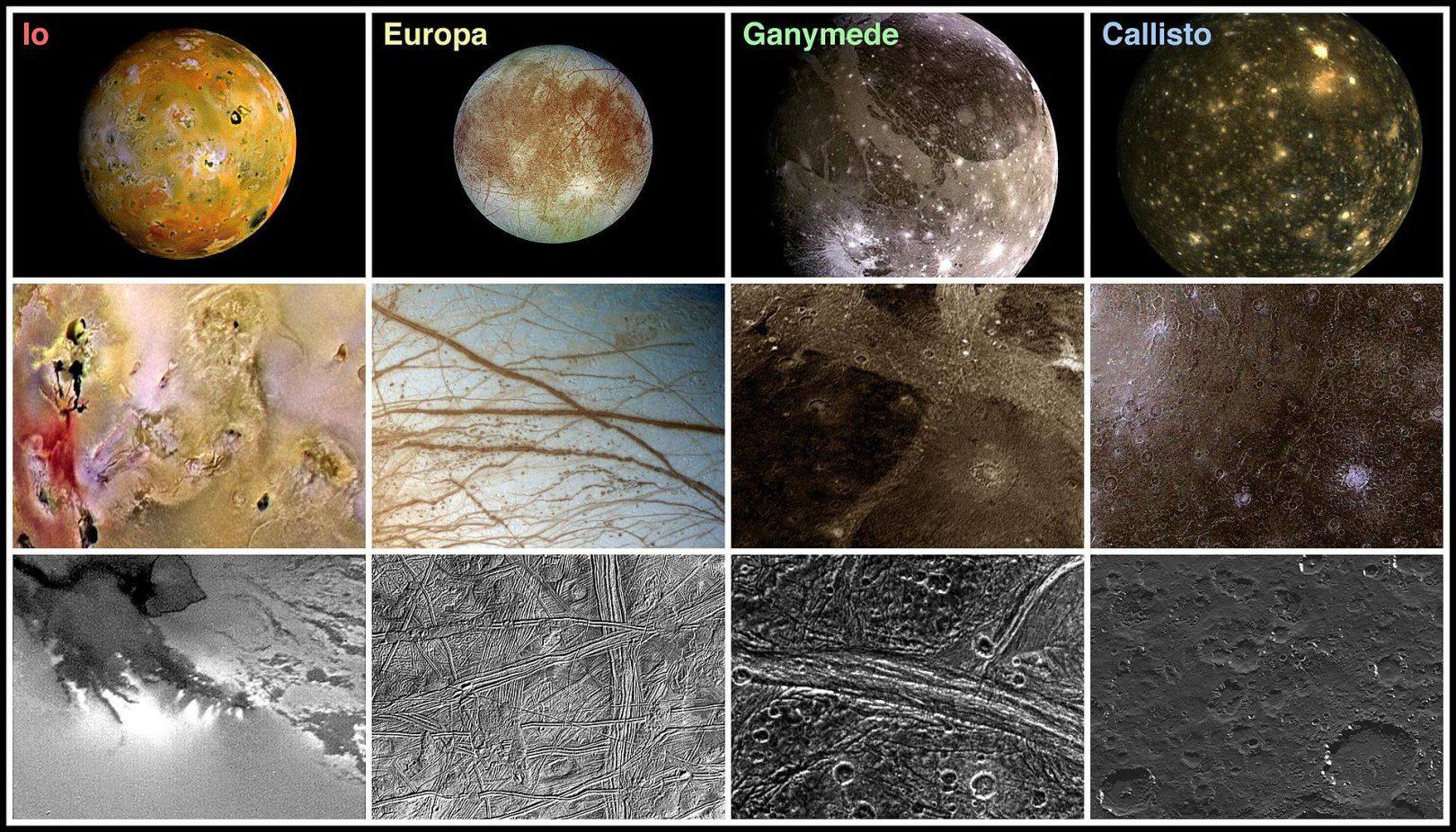Selection of 12 interesting facts about the amazing moons of Jupiter.
1. The first four moons of Jupiter (in order of distance from the planet — Io, Europa, Ganymede and Callisto) were discovered in 1610, independently of each other by Galileo Galilei and Simon Marius. It is believed that Marius observed them before Galileo, but the Italian was the first to report his discovery. Therefore, they are often called the Galilean moons of Jupiter. At the same time, we use the names for them that Marius proposed.
2. The discovery of Jupiter’s moons was one of the decisive steps in the geocentric system of the world, which assumed that all celestial bodies orbited the Earth. It refuted the thesis of the opponents of Copernicus that the Earth could not orbit the Sun, since the Moon orbited around it.
3. In total, as of the beginning of 2018, astronomers know about 69 moons of Jupiter. Of these, only 8 are regular moons — that is, bodies that are believed to have formed together with the planet. The rest of the moons are objects captured by the gravity of the gas giant over billions of years of its existence.



4. Six small moons of Jupiter belong to the category of “lost”. This means that they have not been observed since their discovery, and astronomers do not have enough data to accurately calculate their orbits.
5. The two moons closest to Jupiter — the 60-kilometer-long Metis and the 20-kilometer-long Adrastea — fly around it faster than it makes one rotation around its axis. Tidal forces gradually reduce the radius of their orbits. In the distant future, these moons will cross the Roche limit and be torn apart by Jovian gravity, after which their fragments will gradually fall out on a giant planet.
6. All major moons of Jupiter rotate synchronously and always face it with the same side. At the same time, Ganymede, Europa and Io are with each other in an orbital resonance of 4:2:1.
7. The mass of the four Galilean moons is 99.997% of the total mass of all the moons of Jupiter and its rings.
8. Io is characterized by the largest endogenous activity in the Solar System. There are over 400 active volcanoes on its surface. Lava flows stretch along it for tens and hundreds of kilometers, and the height of volcanic emissions reaches 500 km. It is believed that such activity is due to tidal interaction with Jupiter and other Galilean moons.



9. Io volcanoes’ emissions significantly enhance Jupiter’s magnetosphere. Because of this, the moon’s orbit actually passes inside one of the radiation belts of the gas giant. An astronaut who dares to land on Io will receive a lethal dose of radiation in just 3-4 hours.
10. The surface of Europa is completely covered with ice and is one of the smoothest in the Solar System. There are very few craters on this moon and there are no mountains. An ocean of salt water up to 100 km deep is hidden under the ice crust. Many scientists consider Europa to be one of the most promising places to search for extraterrestrial life in the Solar System.

11. Ganymede is the largest moon of any of the planets of the Solar System. Its diameter is 5,268 km, which is 8% more than the corresponding figure of Mercury. However, at the same time, the mass of Ganymede is only 45% of the Mercurian. This is due to the fact that a significant part of it falls on water ice. Ganymede is also the only moon in the Solar System with its own magnetic field.
12. The results of computer modeling and analysis of the deviations of Jupiter’s magnetic field suggest that oceans of liquid water may also be hiding under the surface of Ganymede and Callisto.



Follow us on Twitter to get the most interesting space news in time
https://twitter.com/ust_magazine

